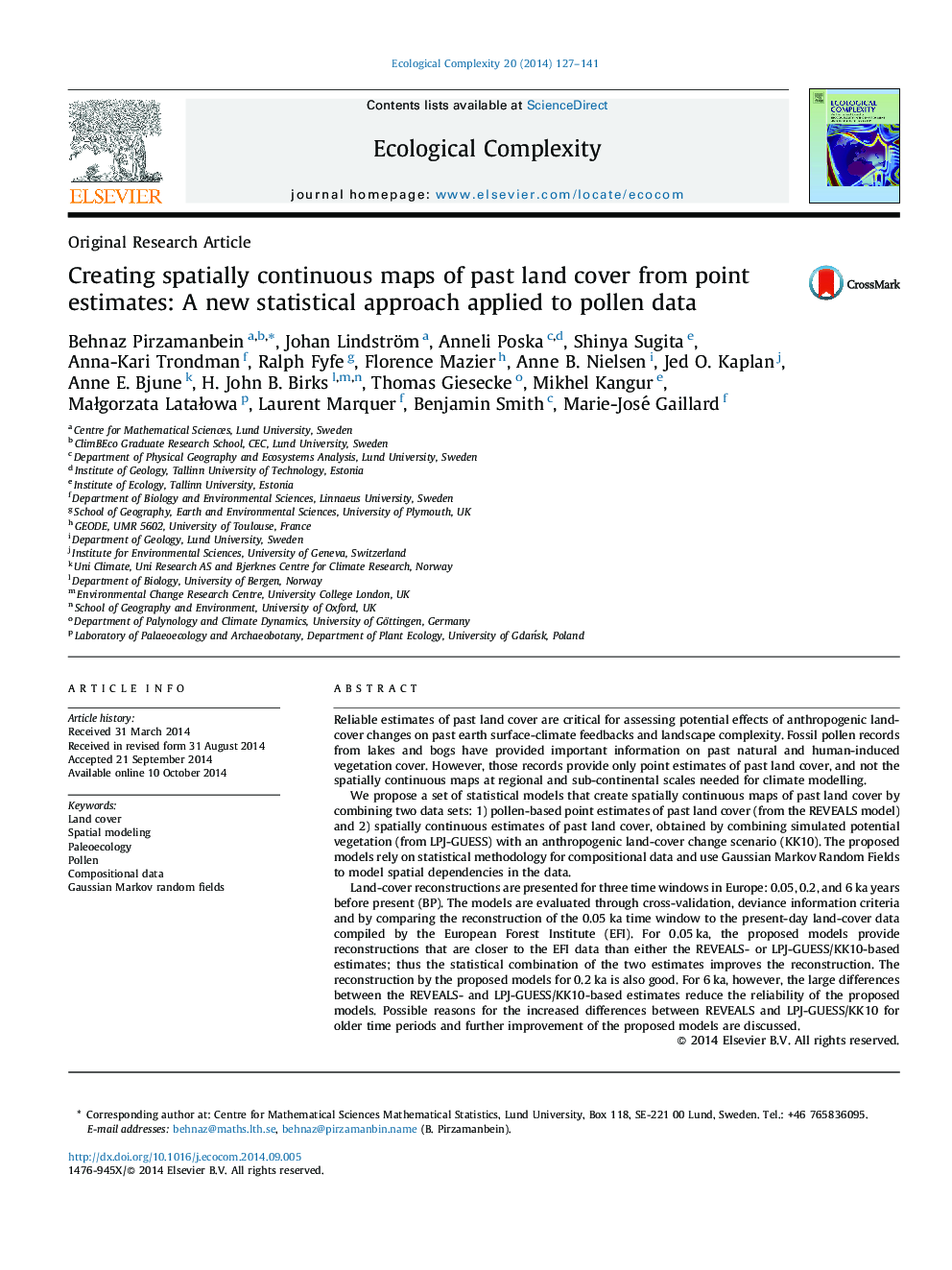| کد مقاله | کد نشریه | سال انتشار | مقاله انگلیسی | نسخه تمام متن |
|---|---|---|---|---|
| 4372363 | 1617094 | 2014 | 15 صفحه PDF | دانلود رایگان |
• A statistical model for reconstructing past land cover is proposed.
• The proposed model combines data from pollen-records with output from a dynamic vegetation model and an anthropogenic land-cover change scenario.
• Land-cover reconstructions are presented for three time windows in Europe: 0.05, 0.2, and 6 ka years before present.
• The model is validated through cross-validation, deviance information criteria and by comparisons with present-day land-cover data compiled by the European Forest Institute.
Reliable estimates of past land cover are critical for assessing potential effects of anthropogenic land-cover changes on past earth surface-climate feedbacks and landscape complexity. Fossil pollen records from lakes and bogs have provided important information on past natural and human-induced vegetation cover. However, those records provide only point estimates of past land cover, and not the spatially continuous maps at regional and sub-continental scales needed for climate modelling.We propose a set of statistical models that create spatially continuous maps of past land cover by combining two data sets: 1) pollen-based point estimates of past land cover (from the REVEALS model) and 2) spatially continuous estimates of past land cover, obtained by combining simulated potential vegetation (from LPJ-GUESS) with an anthropogenic land-cover change scenario (KK10). The proposed models rely on statistical methodology for compositional data and use Gaussian Markov Random Fields to model spatial dependencies in the data.Land-cover reconstructions are presented for three time windows in Europe: 0.05, 0.2, and 6 ka years before present (BP). The models are evaluated through cross-validation, deviance information criteria and by comparing the reconstruction of the 0.05 ka time window to the present-day land-cover data compiled by the European Forest Institute (EFI). For 0.05 ka, the proposed models provide reconstructions that are closer to the EFI data than either the REVEALS- or LPJ-GUESS/KK10-based estimates; thus the statistical combination of the two estimates improves the reconstruction. The reconstruction by the proposed models for 0.2 ka is also good. For 6 ka, however, the large differences between the REVEALS- and LPJ-GUESS/KK10-based estimates reduce the reliability of the proposed models. Possible reasons for the increased differences between REVEALS and LPJ-GUESS/KK10 for older time periods and further improvement of the proposed models are discussed.
Journal: Ecological Complexity - Volume 20, December 2014, Pages 127–141
